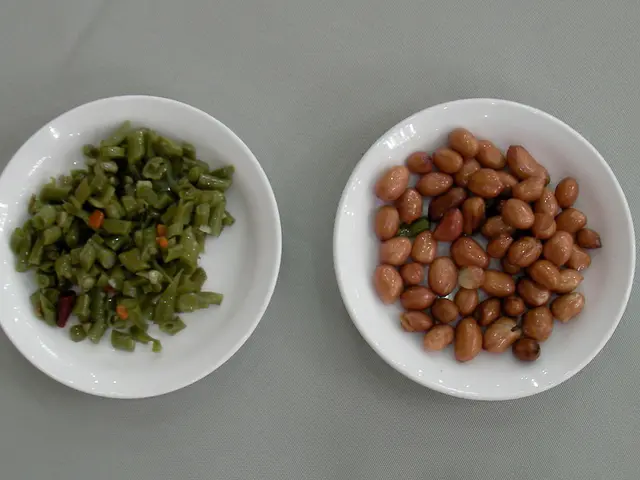Following the High Court's Decision, PETA's Assertion on the Ineffectiveness of Imprisoning Canines
In a recent ruling, the Supreme Court of India has ordered the immediate removal of stray dogs from Delhi and the National Capital Region (NCR) in an attempt to curb rising rabies and dog bite incidents. However, this approach faces criticism and legal concerns as it conflicts with established dog population control strategies.
The bench of Justices JB Pardiwala and R Mahadevan issued binding instructions, calling recent dog bite incidents "extremely grim." The order requires the immediate pickup and permanent sheltering of stray dogs from Delhi-NCR, with no release back to the streets. This mass removal is viewed as problematic by multiple stakeholders.
Critics assert the order is procedurally and institutionally flawed and may undermine existing, proven population control strategies. It may inadvertently reduce sterilization efforts, as shelter resources are redirected, risking an increase in bites and rabies in the future. The order is seen to contradict India’s Animal Birth Control (ABC) rules, 2023, which mandate sterilization and vaccination rather than confinement.
Sterilization (Animal Birth Control) combined with vaccination is considered the scientifically endorsed method to stabilize stray dog populations and reduce rabies. Jaipur’s decade-long ABC program halved stray dog numbers and sharply reduced puppies, indicating population stabilization. Goa achieved approximately 70% vaccination coverage, leading to better rabies control, supported by tech-enabled vaccination tracking. Experts emphasize that stable, sterilized dog populations are less aggressive, and bite incidents decline with routine vaccination.
Aggression and bite risk can also be managed by community-based feeding, training, and engagement with trained canine behaviourists, which reduces aggression without removal. Authorities and experts agree a successful approach must include community involvement, legal frameworks, animal welfare, scientific sterilization, vaccination, and technology-assisted monitoring rather than solely mass removal or permanent sheltering.
The Delhi government is directed to create shelter capacity for at least 5,000 dogs within six to eight weeks. These shelters must be staffed with sufficient personnel for sterilization and vaccination, equipped with CCTV monitoring, and designed to scale up in the future. Dr Aravindan, PETA India's Senior Director of Veterinary Affairs, suggests that had an effective dog sterilization programme been implemented, there would be fewer dogs on the road today.
The PETA statement encourages the public to take in a dog in need from an animal shelter or the street. Dr Aravindan also mentions a 2001 government requirement for sterilisation and vaccination of community dogs, which she believes also calms their behaviour. The order requires immediate removal of stray dogs from all localities and housing them in shelters. The statement also suggests closing illegal pet shops and breeders that contribute to animal abandonment.
However, the bench of Justices JB Pardiwala and R Mahadevan told amicus curiae Gaurav Agarwala to suggest steps to address the stray dog menace. Justice Pardiwala stated that action should be taken at the earliest and no sentiments should be involved. Forced removal of community dogs from Delhi's streets will cause uproar in communities that care deeply for them and chaos and suffering for the dogs on a large scale. The statement from PETA India's Senior Director of Veterinary Affairs also states that forced removal will do nothing to curb the dog population, reduce rabies, or prevent dog bite incidents.
In summary, the evidence from Delhi’s recent events and comparative programs in other Indian cities strongly favors sterilization and vaccination-based population control programs as more effective, sustainable, and humane than mass removal or permanent sheltering, which carries serious drawbacks and legal conflicts. Community-based and technology-supported interventions complement these strategies to reduce rabies and dog bite incidents effectively.
The ruling by the Supreme Court of India, requiring the immediate removal of stray dogs from Delhi and the NCR, overlooks scientifically endorsed methods for stray dog population control. These methods, such as sterilization and vaccination, are found to be more effective in reducing rabies and dog bite incidents. For instance, Jaipur's ABC program has shown significant success in halving stray dog numbers. Furthermore, political and community involvement is crucial in implementing these strategies, as forced removal, like the one suggested in the order, may cause uproar and chaos, and, despite popular belief, will not curb the dog population, reduce rabies, or prevent dog bite incidents.







